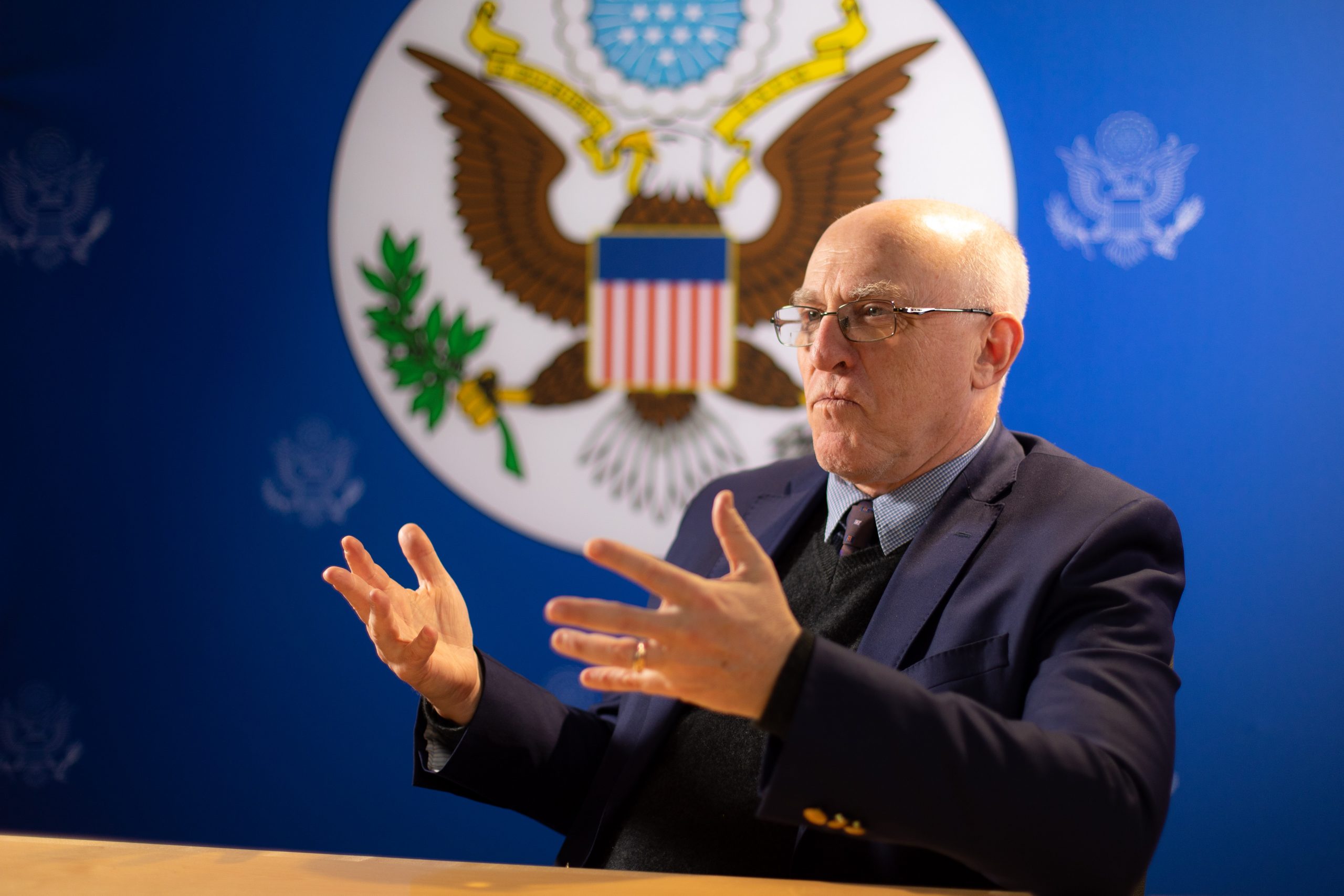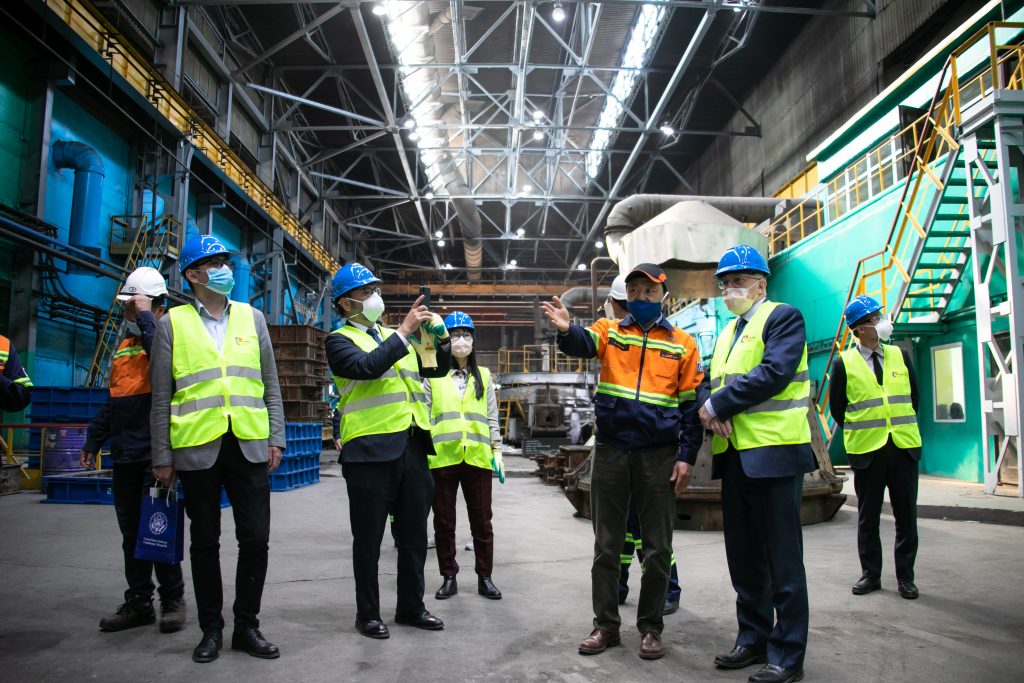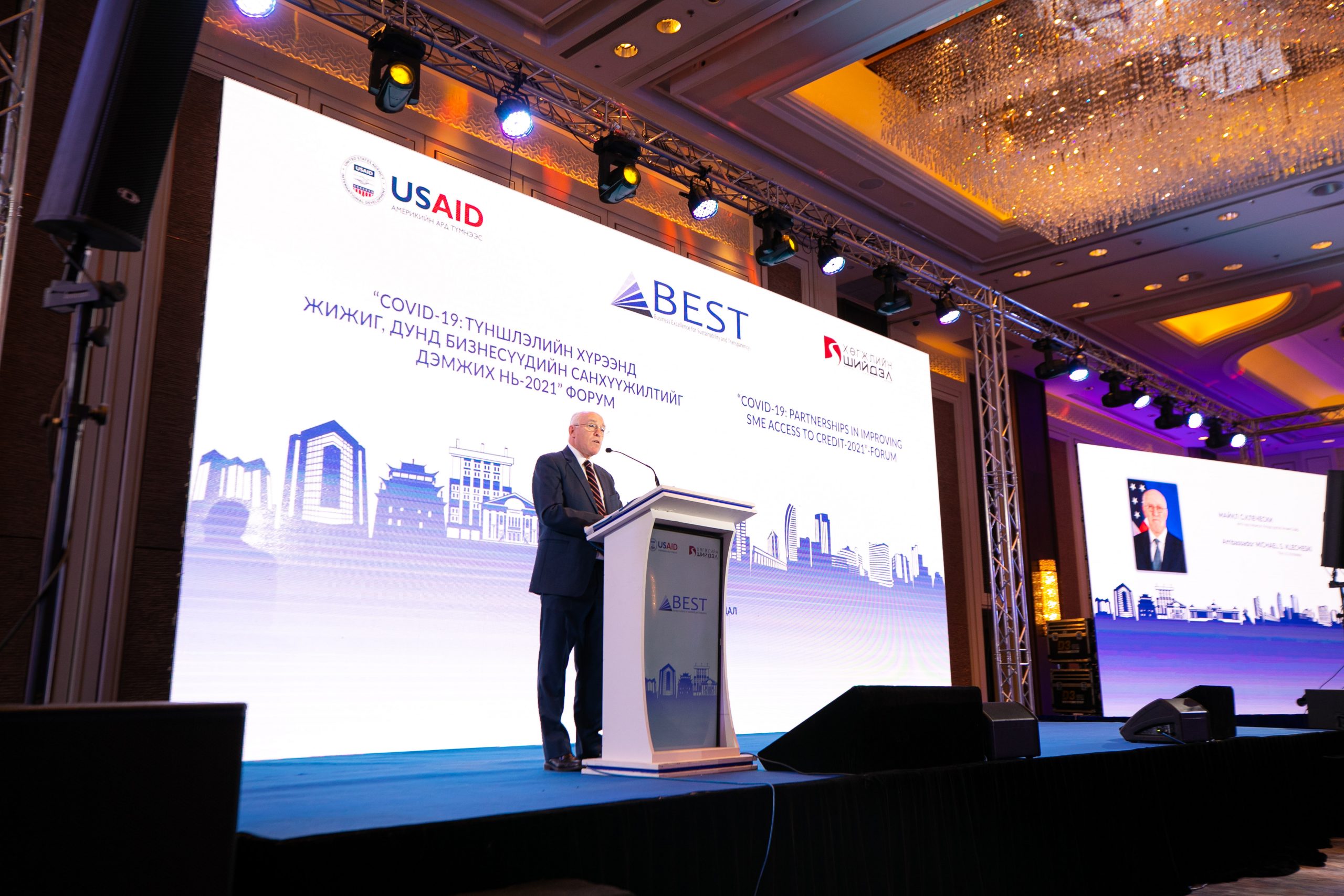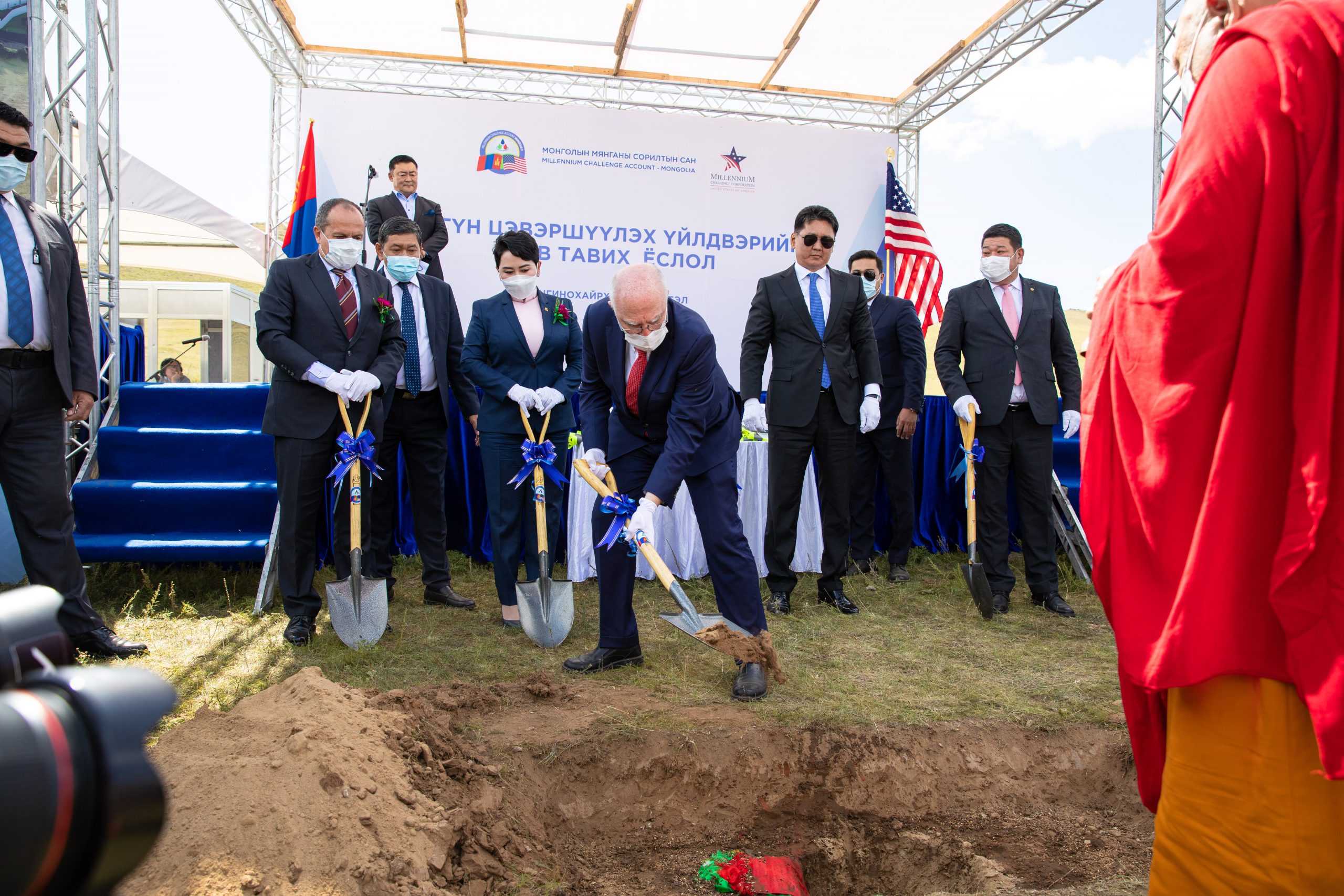Michael S. Klecheski: Mongolia has significant endowments that are attractive to investors

“Mongolian Economy” magazine spoke with US Ambassador to Mongolia Michael Stanley Klecheski on economic and business relations, especially the investment environment.
-Thank you, Mr. Ambassador, for accepting our invitation. To begin our interview, I would like to ask you to share with our readers your thoughts on the level of economic and business relations between our countries in recent years.
-Thanks for the question and for the opportunity to talk. Economic cooperation is a key element of this strategic partnership between our countries. And a lot of what we do here is aimed at laying the foundations to strengthen this market-oriented, private sector-driven, sustainable model of economic growth. For example, one of our most successful projects is a 5-year, $15-million U.S. Agency for International Development (USAID) program to support small and medium enterprises so they can improve operations and management, gain access to bank loans to expand their businesses, and create new jobs.
Since it began in 2019, this program has helped over 1,000 Mongolian businesses and facilitated over $21 million in private sector financing.
Another example I am very proud of is that the U.S. Government, through various forms of technical assistance, was able to help to get Mongolia off the Financial Action Task Force (FATF) gray list and strengthen its anti-money laundering and counter-terrorist financing systems. We continue to work with Mongolia on that because we want it to remain off the gray list, we support that because it is in our interests no less than it is in Mongolia’s interests. Increasing private sector trade and investment is one of our top priorities, as I testified before the U.S. Senate to become an ambassador. While trade between our countries declined in 2020 after reaching a five-year high in 2019, we are pleased that bilateral trade began to bounce back in 2021. Mongolian exports to the United States have increased by over 30 percent. Trade continues to lag globally, but there is a vitality to our bilateral commercial relationship, so we are hopeful that in the coming year we will get to new levels.
-In 2012, U.S. investment in Mongolia reached $350 million, but this has declined in recent years. What is the reason for this?
–Global investment flows into Mongolia reached a peak in 2011-2012 because of a dramatic expansion in the mining sector. While year-to-year changes have not matched those levels since I am proud to say the total value of U.S. direct investment stock in Mongolia reached an all-time high of $779 million in early 2020. The COVID-19 pandemic had a negative impact on investment all over the world, including in Mongolia. But the domestic economic recovery, high international commodity prices, and the Oyu Tolgoi project getting back on track give us cause for optimism. So I am very pleased and hopeful that the Oyu Tolgoi project will indeed advance the way we have all been hoping.

At the Erdenet mining corporation SOE
-Mongolia’s largest investors, such as Canada, Australia, and China are investing heavily in the mining sector. But in which sectors of Mongolia is your country interested in investing?
-The mining sector is of course the biggest part of Mongolia’s economy and attracts significant U.S. interest. But our investors and companies have found success in many sectors, such as finance, retail, real estate, services, wholesale trade, and food and beverages. One area we are particularly excited about is renewable energy and green technologies. That is important for us, not just economically, but also politically because fighting climate change and the resulting problems is one of the top priorities of President Biden. Mongolia has some of the highest solar and winds energy potential in the world. One of our upcoming projects focuses on improving energy sector governance and creating an enabling environment for renewables and advanced energy technologies.
The mining sector is of course the biggest part of Mongolia’s economy and attracts significant U.S. interest. One area we are particularly excited about is renewable energy and green technologies.
We are also pleased to see the government and investors beginning to work together last year to resolve some regulatory challenges that have affected previous energy sector investments. So the energy sector is something of significant potential. I am optimistic these efforts will boost private sector interest in Mongolia’s renewables sector. On the government side, we are looking to expand the presence of the U.S. International Development Finance Corporation (DFC). The DFC is an institution of the U.S. Government that supports transparent, sustainable, and most importantly private sector-led investments that have a development impact and create sustainable growth. They are looking at substantially expanding their $100 million Mongolia portfolio, with a focus on priority sectors like energy and climate, healthcare, financial inclusion, and food security.
–Mongolia is paying close attention to reforming the investment climate and updating laws. To what should our two countries pay attention to become an investor-friendly country?
-We welcome the government and parliament’s publicly stated focus on improving the investment climate, combating corruption, and boosting private sector activity through business-friendly reforms.
Carrying out these reforms through a transparent process with ample opportunity for input from domestic and foreign businesses and other interested parties will ensure that laws and regulations are designed in a way that best addresses their needs.
In other words, it should be an open process with a good amount of interaction. On this note, we are working hard to secure full implementation of something we have been talking about a lot for a long time, which is the U.S.-Mongolia Transparency Agreement, which among other things, requires the Mongolian government to post for public comment draft measures that affect trade and investment, and then to consider and respond to public input. I think this is very much in line with what the Mongolian government has been doing and wants to do. But the Transparency Agreement would put it at a higher level and offer yet another very effective way to do that. So we view the Transparency Agreement as a critical building block in our trade and investment relationship. We have been saying this for a long time, and its full implementation is going to be welcomed both by the U.S. government and by the business community. The success of that will be a real sign that this kind of cooperation can work, and in turn will further boost interest in the United States in investing in Mongolia.

“Partnerships in Improving SME Access to Credit-2021” forum
-What are the biggest barriers to American investors in Mongolia?
-Mongolia has significant endowments and material and human resources that are attractive to both domestic and foreign investors. I’m always impressed by Mongolia’s young people and their potential. But the message we hear, both from the U.S. and the Mongolian business community, is clear that they seek greater transparency, stability, and predictability in the legal and regulatory environment. What this means is more consultation in the creation of laws and regulations. And this is where the Transparency Agreement comes in.
More consistency in enforcement is a very important element, as is more synchronization between national regulations and local regulations, and a more timely and effective dispute resolution process.
My colleagues at the embassy and I are particularly encouraged by recent steps that your government has taken to streamline bureaucracy through things like digitalization and enhancing the independence of the courts through judicial reform. These things have the potential to increase the ease of doing business while bolstering democracy. When we talk about barriers, but also when we talk about incentives, every year, every U.S. embassy all over the world produces an investment climate statement. It is a publicly available document, and we very much welcome people reading it. It is based on consultation with the business community, both American and local. It lays out both the potential and the barriers. This year, we discussed the investment climate statement with members of parliament and others. So I would recommend that to your readers if they are interested. It is publicly available on our embassy website, and it is a very good document. I am very proud of it.
–The United States’ economy is the largest in the world. What role has foreign investment played in American development? What do you think is the “secret” to attracting foreign investment?
-Foreign investment plays a key role in bolstering economic growth, creating high-paying jobs, spurring innovation, and driving exports globally. That’s true throughout the world, including in the United States, which is the world’s largest recipient of foreign direct investment. So interestingly, the U.S. Department of Commerce estimates that 12 million American jobs are attributable to foreign direct investment. Investors are attracted to the United States for a variety of reasons, but let me highlight just two of them:
First, a stable, transparent, market-oriented regulatory framework and legal system to ensure that investors can be confident that their voices are heard as rules and regulations are developed, and that their contracts are protected, and that their activities are not hampered by things like bureaucracy and corruption.
That is one element that is very important to attracting foreign direct investment all over the world. Second, the U.S. workforce is among the most skilled and productive in the world. I am very proud that our culture focuses on things like diversity, openness, and innovation. And the United States has a very strong education system. So as I said earlier, Mongolian young people are very, very impressive. They often travel abroad, and they come back with a lot of ideas. But they also inject a lot of great ideas in the countries where they visit or are working, even temporarily. I know quite a few Mongolians who have been in the United States or are in the United States, who are contributing to our dynamism. It is one of those things that makes for a dynamic economic environment, and that is tremendously important.

The groundbreaking ceremony for an advanced water purification plant, the first major project in the Millennium Challenge Corporation’s $350 million Mongolia Water Compact. August 2021
-A joint Mongolian-American Trade and Investment Framework Agreement Council was established under an agreement between our two governments. How effective has the agreement been?
-The Trade and Investment Framework Agreement (TIFA) plays an important institutional role. It provides the strategic framework and principles for dialogue between our two countries on trade and investment issues. This agreement established a TIFA Council, which convenes one of several high-level dialogues we hold with Mongolia as part of our strategic partnership. The TIFA Council talks, which are chaired on the U.S. side by the Office of the U.S. Trade Representative, are an important forum to advance our bilateral trade and investment relationship, which again is one of our top priorities.
-The TIFA Council has met six times before. When is the next meeting scheduled, and what issues are planned to be discussed?
-The TIFA Council last convened in 2019 and discussed a range of bilateral trade and investment issues, including transparency, the investment climate, intellectual property rights protection and enforcement, trade-in cashmere, the U.S. Generalized System of Preferences (GSP), trade facilitation, and trade promotion. We anticipate a similar set of issues at the next talks. Given the COVID-19 pandemic, it is difficult to predict exactly when the next TIFA Council talks will take place. That said, this year is the 35th anniversary of the establishment of diplomatic relations between the United States and Mongolia, so we are planning a wide variety of engagements, and of course, economic issues are going to be very significant in this year of celebration.
-Let’s turn to foreign trade. Considering the structure of trade turnover between our two countries, the trade balance is out of balance and exports and imports are very different. What are the main barriers to Mongolia’s exports to the United States? What are the opportunities to facilitate and support this?
-Another interesting question. The mining sector continues to be the biggest buyer of U.S. exports to Mongolia. U.S. technology and equipment exports to Mongolia are supporting and strengthening mining production and helping Mongolia export to the world. That said, Mongolian exporters face many challenges, not least the disruptions to supply chains and transportation networks globally and particularly around Mongolia since the start of the pandemic. Improving Mongolia’s transportation and logistics infrastructure could make exports more resilient in the future.
Another challenge is that Mongolia’s exports to the world are primarily minerals. We are committed to working with our Mongolian partners to increase and diversify trade opportunities between our two countries, including by increasing competitiveness and value-added potential in non-mining sectors, and I have heard from your government officials that they have the same priorities, so we are supporting your government’s goals.
One example is cashmere: helping consumers better understand the high quality and uniqueness of Mongolian cashmere is an important way to raise its competitiveness in international markets, and we are supporting that effort with a USAID project that completed in 2021, focused on branding and marketing.
There was a third element that I think is also important, and that is sustainability. So that study, which was produced through USAID support, is also available to the public. We would be very pleased if people in that sector read it. It has some really concrete ideas on how to boost the cashmere sector. Another important element is that there is tremendous enthusiasm for learning English here in Mongolia. That has implications not just for language and communication, but it has tremendous economic implications, as well. Because people who speak English are able to deal with the rest of the world in ways that otherwise would be more difficult. For us, that is a top priority, so we are looking to improve access to high-quality English learning throughout the country. In every aimag, I have visited, and I have visited almost every aimag in the country, the governors and all the officials make that one of their top priorities. I am convinced that is going to pay dividends for the Mongolian economy, particularly in technology and tourism.
–The draft Mongolia Third Neighbor Trade Act was initiated by the U.S. Congress in April 2021. When is the draft law expected to be passed?
-The proposed act is under consideration in the U.S. Congress right now. Because the U.S. Congress is a different branch of government than the executive branch where I serve, I can’t comment on our view of it or our support for it, but it is something that many people have asked us about. But of course, that is based on the idea that Mongolia’s cashmere and wool sectors have a lot of potentials. So, while the Third Neighbor Trade Act is being considered by Congress, the State Department and USAID have been doing other things to support that same goal, which is to help strengthen Mongolia’s cashmere sector.
The interest to the United States, obviously, being a stronger Mongolian economy.
And that is why we have been able to do things like that USAID study I mentioned earlier, focused on branding, marketing, and sustainability. Another important piece of this puzzle to boost the cashmere sector involves financing. I mentioned earlier the U.S. Development Finance Corporation (DFC), which provided a $5 million loan to help a woman-owned cashmere business expand production and exports by constructing a new factory and purchasing additional equipment. DFC is interested in many sectors in Mongolia, and cashmere certainly is one of them. We hope these efforts will result in high value-added exports and increase income for Mongolians across the cashmere value chain from herder to exporter.
-Aside from all this, what do you think about Mongolians, and have you noticed anything unique in Mongolia?
-My wife and I have been here almost three years, and we really love this country. Anybody who looks at our Twitter page probably can see just how much we love this country. One of the things we like most about Mongolia is that people are really friendly and warm. I know that’s something that every diplomat is supposed to say. But it’s very sincere. And I can tell you that we have a lot of Mongolian friends. We feel really lucky to be able to do that. One thing that’s unique about Mongolia is its traditions. Every country has strong traditions, which are important. For me, the traditions of Mongolia have continued to shape the way people act and think, and I find that really wonderful. I always say that when somebody hands me the snuff bottle, I think this is the epitome of Mongolian tradition. I know that in the time of the pandemic, it’s more complicated. But those traditions are something that we find unique, and that we love.
And I think whenever Americans come to Mongolia, either as tourists or working at our embassy or working in the private sector, most of them are captured in a positive way by the uniqueness of your traditions, but also by how those traditions are reflected in everyday life.
Maybe I can just add one thing – Mongolia is a country and a society that values its traditions. But it is also a society that sometimes uses those traditions in very modern ways. So the example we all cite, and it is a good example, is The HU, which, on the one hand, has traditional instruments, traditional ways of singing, but at the same time, rock music is not exactly a traditional type of music. But that’s true not only with The HU. The fact that young Mongolians are now part of the international community shows how they value the traditions of the past but are able to integrate them in a really beautiful way with the challenges of today. So that’s what’s unique, and it’s really cool.
-Thank you so much for giving this interview. All the best to you.